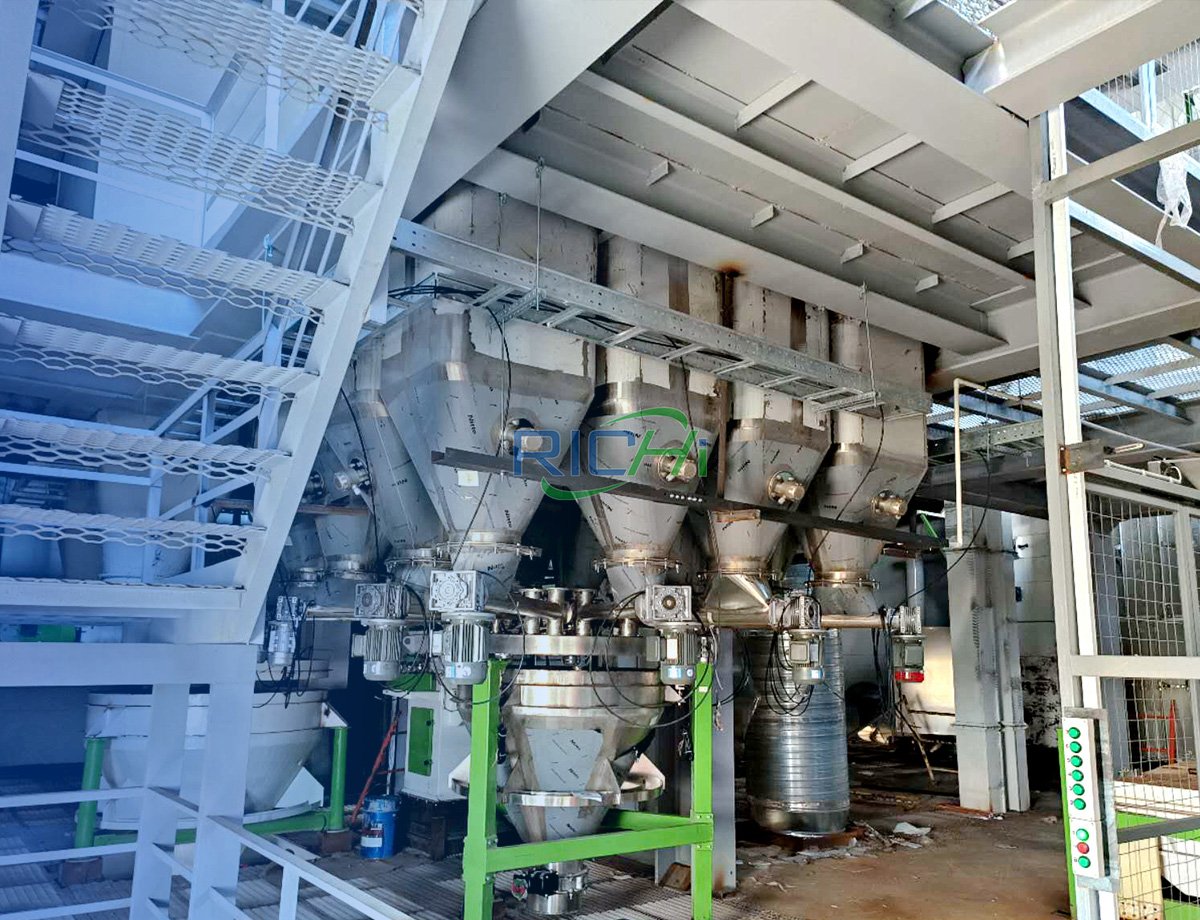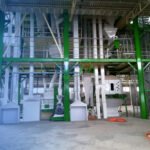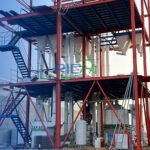A feed mill factory with a capacity of 35-40 tons per hour (t/h) represents a substantial investment in the animal feed industry, capable of producing significant quantities of feed for various livestock and aquaculture operations. Understanding the annual production time for such a facility is essential for optimizing operations, planning maintenance, and maximizing profitability. This article examines the factors influencing the annual production time of a 35-40t/h feed mill factory and provides insights into typical operational schedules.
Theoretical Maximum Production Capacity
To start, let’s calculate the theoretical maximum production capacity of a 35-40t/h feed mill:
- Hourly capacity: 35-40 tons
- Daily capacity (assuming 24-hour operation): 840-960 tons
- Annual capacity (assuming 365 days of operation): 306,600-350,400 tons
However, this theoretical maximum is rarely achieved in practice due to various factors affecting actual production time.
Factors Affecting Annual Production Time
- Operational Schedule Most feed mills do not operate continuously throughout the year. A typical operational schedule might include:
- Operating hours per day: 16-20 hours
- Operating days per week: 5-6 days
- Operating weeks per year: 50-52 weeks
- Annual operating hours: 4,000-6,240 hours
- Planned Maintenance and Downtime Regular maintenance is vital for ensuring the longevity and efficiency of feed mill equipment. Planned downtime typically includes:
- Daily cleaning and minor maintenance: 1-2 hours per day
- Weekly maintenance: 4-8 hours per week
- Annual major maintenance: 1-2 weeks per year
- Unplanned Downtime Despite best efforts, unplanned downtime due to equipment failures, power outages, or other unforeseen circumstances can occur, usually accounting for:
- 2-5% of total operational time
- Seasonal Demand Fluctuations Feed demand often varies seasonally, impacting production schedules:
- Peak seasons may necessitate extended operating hours.
- Off-peak seasons might allow for reduced production and increased maintenance time.
- Raw Material Availability The availability of raw materials can also affect production time:
- Delays in raw material delivery may cause production interruptions.
- Seasonal availability of certain ingredients might influence production schedules.
- Market Demand Overall market demand for feed products shapes production schedules:
- High-demand periods may require full production capacity utilization.
- Low-demand periods might lead to reduced production hours.
- Regulatory Compliance and Inspections Time must be allocated for regulatory inspections and compliance activities, including:
- Food safety audits
- Environmental compliance checks
- Quality control inspections

Calculating Realistic Annual Production Time
Taking these factors into account, we can estimate a realistic annual production time for a 35-40t/h feed mill factory:
- Base Operational Schedule:
- 18 hours per day
- 6 days per week
- 51 weeks per year
- Total base hours: 5,508 hours
- Deductions:
- Daily cleaning and maintenance: 1.5 hours x 306 days = 459 hours
- Weekly maintenance: 6 hours x 51 weeks = 306 hours
- Annual major maintenance: 1.5 weeks = 189 hours
- Unplanned downtime (3% of base hours): 165 hours
- Regulatory inspections and compliance: 50 hours
- Total deductions: 1,169 hours
- Realistic Annual Production Time:
- 5,508 base hours – 1,169 deduction hours = 4,339 hours
Actual Annual Production Capacity
Using the realistic annual production time, we can calculate the actual annual production capacity:
- At 35t/h: 4,339 hours x 35 tons = 151,865 tons per year
- At 40t/h: 4,339 hours x 40 tons = 173,560 tons per year
This represents a capacity utilization of approximately 49-50% compared to the theoretical maximum capacity.
Strategies for Optimizing Annual Production Time
To enhance the annual production time and efficiency of a 35-40t/h feed mill factory, consider the following strategies:
- Implement Preventive Maintenance Develop a comprehensive preventive maintenance program to reduce unplanned downtime and extend equipment life.
- Optimize Changeover Processes Streamline product changeover procedures to minimize downtime between different feed formulations.
- Invest in Automation Automated systems can improve efficiency and reduce the time required for certain processes.
- Enhance Supply Chain Management Improve raw material procurement and inventory management to minimize production interruptions due to supply issues.
- Cross-Train Employees Ensure that staff are trained in multiple areas of operation to provide flexibility in scheduling and reduce downtime due to staff shortages.
- Implement Lean Manufacturing Principles Apply lean principles to identify and eliminate waste in the production process, improving overall efficiency.
- Utilize Data Analytics Use data-driven insights to optimize production schedules and identify areas for improvement in operational efficiency.
- Consider Continuous Improvement Programs Implement continuous improvement initiatives to constantly refine and enhance production processes. (Related post: feed mill engineering)
Conclusion
The annual production time for a 35-40t/h feed mill factory is influenced by various factors, including operational schedules, maintenance requirements, market demand, and regulatory compliance. While the theoretical maximum capacity might suggest production volumes exceeding 300,000 tons per year, realistic estimates based on typical operational parameters indicate annual production capacities ranging from 150,000 to 175,000 tons.
Feed mill operators must carefully balance the need for maximum production with the requirements for maintenance, quality control, and regulatory compliance. By implementing strategies to optimize production time and efficiency, feed mills can maximize output while ensuring the longevity of equipment and the quality of their products.
Understanding and managing the factors influencing annual production time is crucial for the success of a 35-40t/h feed mill factory. By continuously monitoring and improving operational efficiency, feed mill operators can ensure they are making the most of their significant investment in production capacity, meeting market demands, and maintaining a competitive edge in the animal feed industry.


